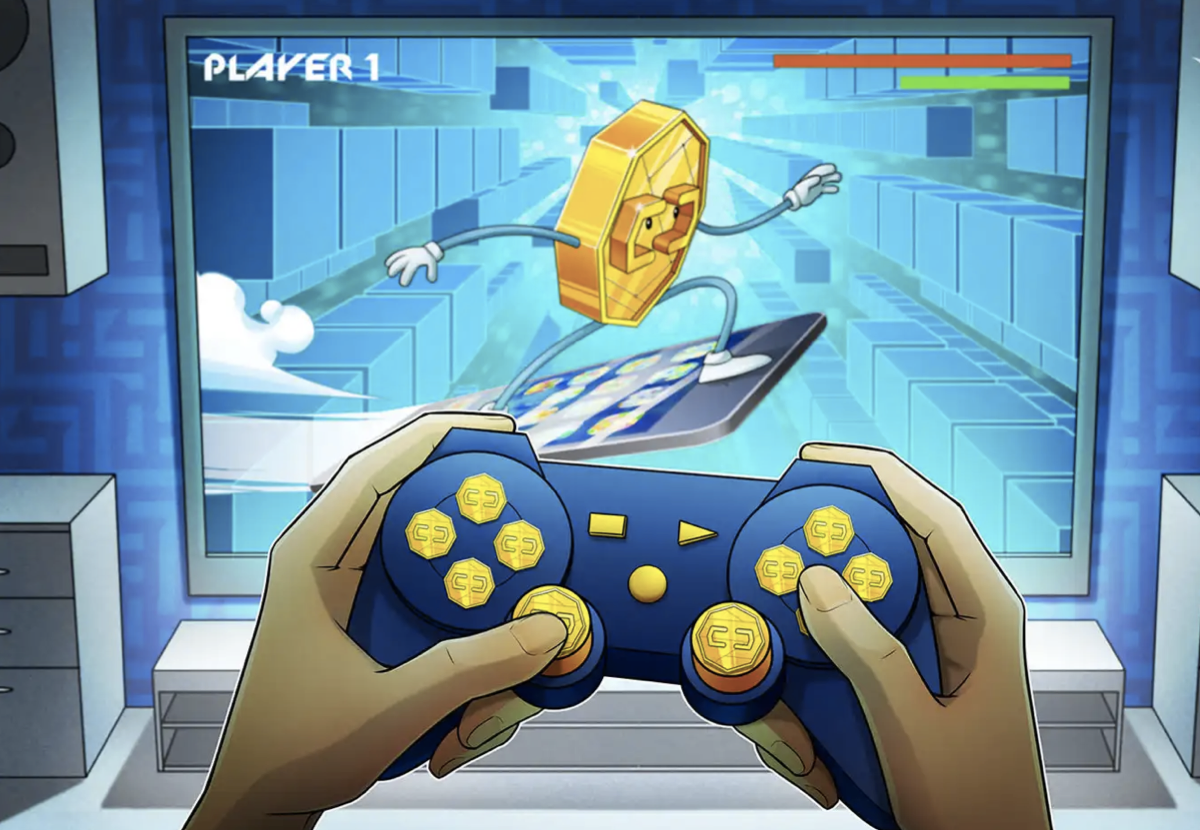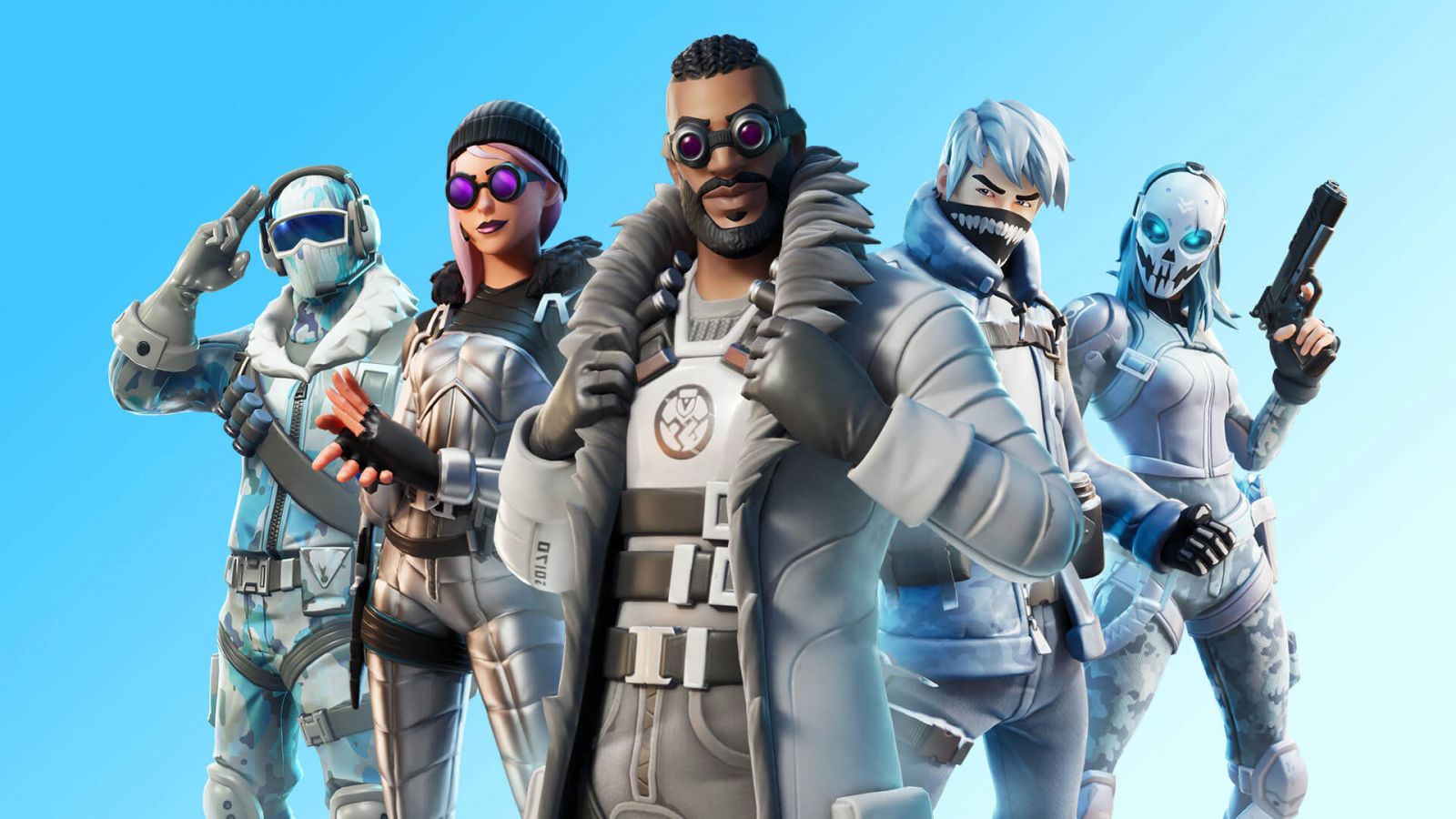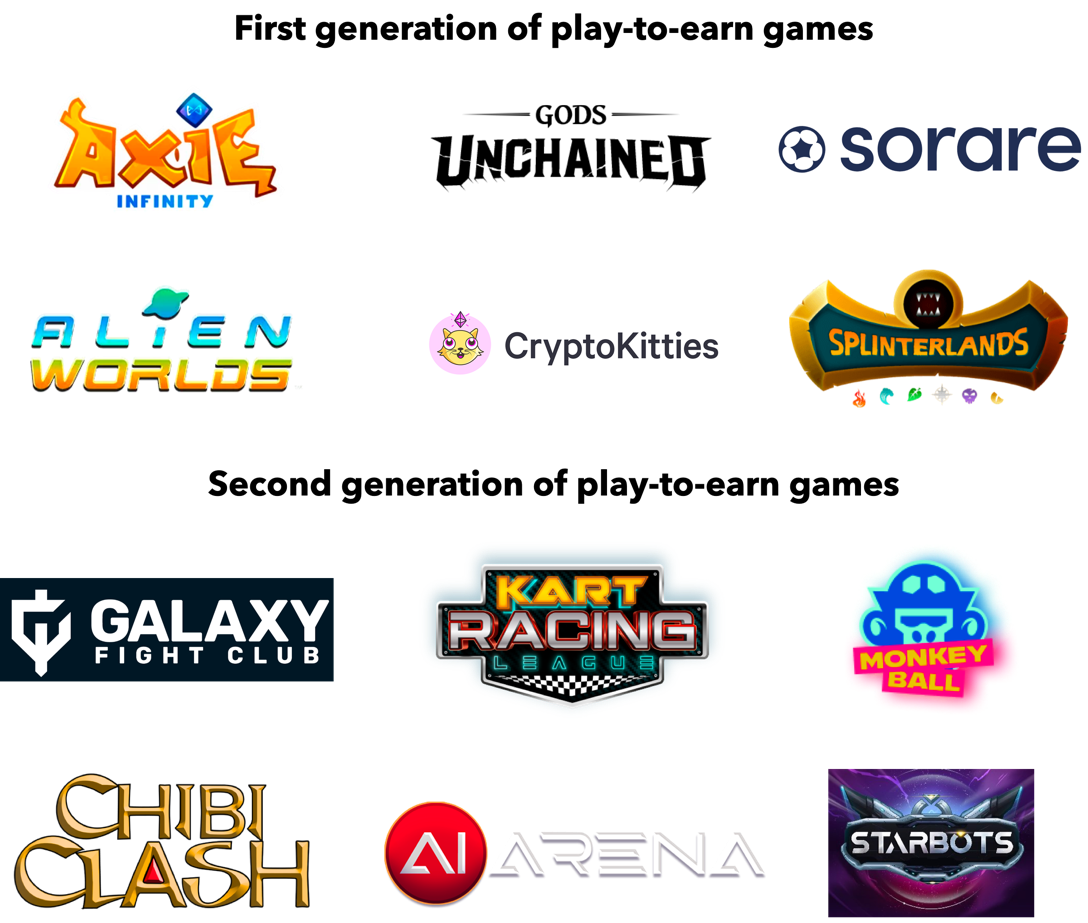


The gaming experience has changed rapidly over the past decade. From Pay to Play (P2P) to Play to Earn (P2E) , tech has changed the way gamers play and companies monetise. As we witness continuous adoption of P2E games, we will see better experiences being built across all categories of gaming. Read on to learn about this evolution and the kind of economic impact blockchain gaming can make.
In 2021 NFT sales volume totaled $25BN of which nearly $3.4BN was spent on NFT in-game assets. We witnessed brands such as Adidas, Nike, and even Visa purchase NFTs as they believed digital goods can aid the acceleration of digital commerce. As NFTs evolve we are beginning to see a lot more use cases across categories such as music, gaming, and domain names. One of the fastest growing use cases for NFTs is gaming, Axie Infinity being at the forefront of this touched 2MM DAU’s and a total of $2.3BN in total sales volume in October 2021. But before we get into NFT gaming and its rapid growth, let’s look back at how gaming has evolved over the past few decades.
.png)
Source: Altimeter
Pay to Play (PTP) – 1980s
Most early games began with the same economic model where users had to pay money to play the game. Initially, users would have to purchase the game (one-time purchase) they wanted to play either on a computer or a gaming console. However, there were a few problems with this model:
These problems continued to exist as more games were launched but in the late 1990’s when the capabilities of the internet exploded and processing power of computers increased alongside the reduction in the cost of technology, one of the spaces that benefited the most was gaming.
Free to Play (F2P) – Early 2000’s
The evolution of technology and faster internet allowed for the rise of free to play games that removed the paid barriers to entry. The F2P model democratized access to games as users could download a game, start playing it and if they enjoyed, they could choose to spend money. The revenue model for creators and publishers were by way of ads and premium add-ons as they were able to onboard a higher number of users onto the platform. Some of the early F2P games include Runescape and League of Legends that had in-game marketplaces allowing users to purchase in-game items such weapons and skins. The skins were simply customizable appearances that don’t give the purchaser any competitive advantage just a cosmetic appeal while playing the game.

Overtime we witnessed elevated gaming experiences being built in games such as Fortnite and Call of Duty: Warzone that allowed gamers to experience better graphics, faster gameplay, and more in-game items to use while playing. This era of gaming made it more accessible for gamers as they could sample games, select ones they enjoyed and make in-game purchases to support their favorite developers and publishers.
This created a whole new market for game developers and publishers in the form of virtual goods. Now, free to play games such as PUBG, Free Fire, Pokemon Go, and League of Legends make billions of dollars from virtual goods.
.png)
Source: Sensortower & Statista
One of the largest game publishers, Activision that have a portfolio of games such as the Call of Duty, Tony Hawk’s Pro Skater and many more began witnessing higher revenues from in-game items and others than they did from product sales.
.png)
Source: Activision
Now we are clearly seeing that there is huge and growing market for in-game items (virtual goods). In 2020 gamers spent over $54BN on in-game assets that were not monetizable and had no tangible value within the game or outside. This implied that a gamer would spend all that money in purchasing in-game items, continue playing, which upgraded their character traits and were not able to derive any value beyond entertainment from all the skills they had developed by spending all that time playing. This presented the opportunity for game developers to use non-fungible tokens (NFTs) built on blockchain technology to develop games that combined the act of playing a game and creating value for yourself in the form of earning money.
Play to Earn (P2E) – 2017
The mainstreaming of blockchain technology and its applications has enabled the game creators to create economies within a game while ensuring none of the fun attached to gaming is lost. This new type of game allowed for all objects within a game such as land, weapons, and skins to be tokenized as NFTs while also creating further value through their in-game token as cryptocurrencies that is owned by the gamer.

Source: Bitkraft
In this gaming model, not only are the gamers participants but also become owners. However, there are different types of games, but a recurring objective in video games is the accumulation of resources. While playing the game you accumulate rewards in the form of cryptocurrencies that are tradable thanks to decentralized exchanges, and the virtual in-game items (skins, weapons and land) as non-fungible tokens (NFTs).
In 2021, we saw the rise of Axie Infinity, although the first blockchain based game created was Cryptokitties in 2017 with over 1.5MM users at its peak in 2018, Axie Infinity was able to capture a larger userbase reaching over 8MM users. Axie Infinity created in 2018 is an online multiplayer game that allows gamers to breed, raise, battle and trade their Axies (in-game characters) that are NFTs in order to earn more rewards in the form of Cryptocurrencies (SLPs). To start playing the game a user requires 3 Axies that costed around $400 in the beginning, but that number skyrocketed to $1200-$1400 as the number of players rapidly increased. As the game is pretty much decentralised, the platform has its own governance token as well AXS that is used for further game development and can also be bought on exchanges as an investment in the game
.png)
Source: Token Terminal
In 2021, the Axie Infinity marketplace saw over $3.7BN in transaction volume and its platform treasury earned $1.2BN. The rapid increase in transaction volume and revenue was primarily due to the adoption of the game in the Philippines. The pandemic really affected developing countries and more so the Philippines where the unemployment rate reached 40%. Eventually, as most people in the country were out of work, they resorted to NFT gaming as a source of income. At its peak, Axie Infinity had 1.85MM cumulative DAU of which the Philippines accounted for 40% and Indonesia 15%. Additionally, before the pandemic the minimum wage in the Philippines was $170 per month, however, playing Axie that number escalated as gamers began earning as much as $300 a month. Hence, not only did a game that follows a P2E model help replace their income but almost doubled it, which shows the kind of economic impact blockchain based gaming can make.
As we witness continuous adoption of P2E games, we will see better experiences being built across all categories of gaming. Currently, we have card trading, character fighting and racing games, which are being newly created. However, we will witness AAA games such as Fortnite, Call of Duty and other multiplayer games incorporate this technology and economic model.

Investments in Blockchain gaming
The P2E space has not only seen an increase in the users participating but also an increase in funding across platforms that enable and support blockchain gaming. In 2021, investments in blockchain gaming increased 52x to $4.5BN as opposed from $85MM in 2020. These investments range across blockchain games, gaming guilds and metaverse applications.
.png)
Source: Cubewealth
Furthermore, one of the largest video game creators and publishers in the world Ubisoft, recently announced that they are launching the Ghost Recon: Breakpoint game in the form of an NFT playable game. They are creating a platform called quartz that will allow PC players of the game to purchase and trade the in-game items as digits that will be in the form of NFTs.
Conclusion
The global gaming market is expected to grow to $213BN by 2023 at 10% CAGR while the global blockchain market is expected to grow to 67.4BN by 2026 at 68.4% CAGR. Blockchain gaming being at the intersection of both these spaces could benefit from the potential growth and continue to create value across users and developers. There will be some headwinds such as adoption of cryptocurrencies and regulation of all these new assets. Predicting what might happen in the future is speculative but we continue to see increased activity and development in the space.
Need a refresher on NFTs? We got you:
https://lightbox.vc/new-thinking/non-fungible-tokens-nfts